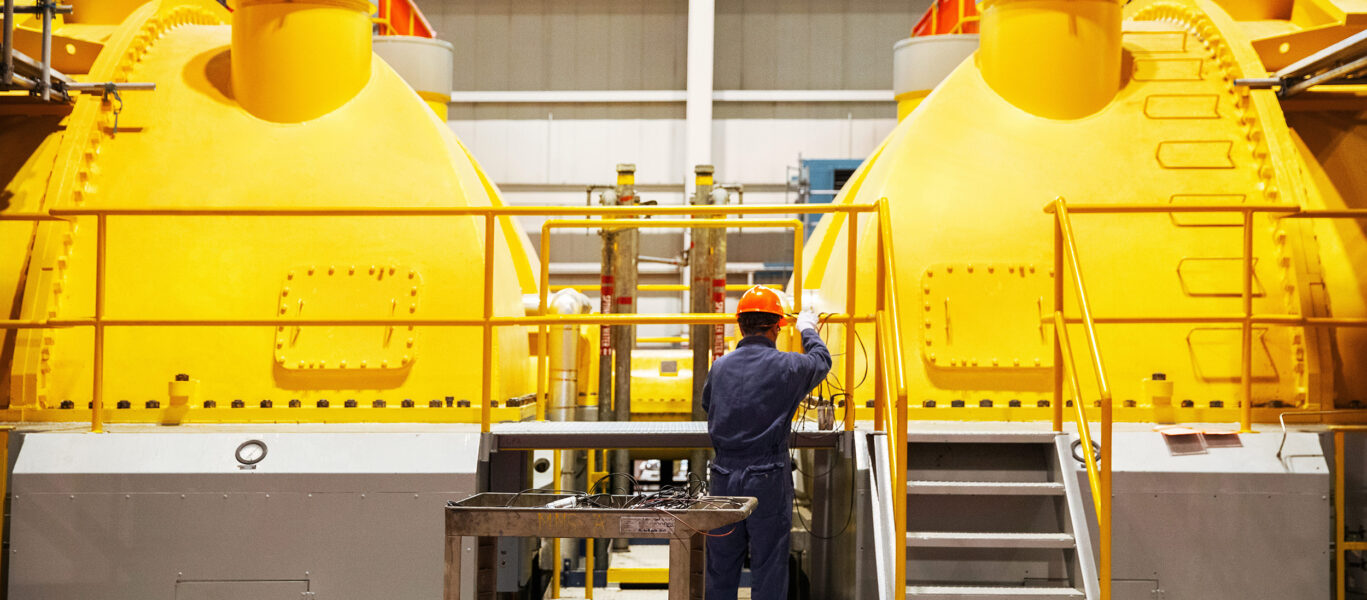At first glance, The Simpsons’, The Terminator and Godzilla don’t seem to have a lot in common. But from the perspective of Daniel Simpson (no relation to Homer), a PhD candidate at Queen’s University, the thread is obvious: all three are cultural juggernauts that have helped to shape the way the North American public thinks about nuclear power.
Nuclear power is clean, affordable and reliable. It can generate prodigious volumes of electricity without requiring a lot of land and without producing significant carbon emissions. But decades into humanity’s use of nuclear power—and with a climate crisis that demands a switch to more low carbon sources of energy—there is still hesitancy among the public about the safety of this technology.
This general sense of unease among certain segments of the population is why, over the past several decades, there have been just a handful of new nuclear projects in North America. The average age of a nuclear plant operating in the United States, for example, is 40 years. Between 1996 and 2012, no new nuclear plants were built south of the border, where nuclear power production peaked in 2012 and has been falling ever since. Here in Canada, where we consume much of the same media as the United States, our nuclear plants are also legacy assets; we have not built new nuclear generating capacity in decades.
This is a problem, because nuclear energy is virtually emission free power. It does not contribute to climate change—and by replacing more polluting forms of energy generation, it can actually help solve climate change. So nuclear is not just clean and reliable, it is an essential technology in meeting our emission reduction targets over the near- and medium-term. It is the best available technology to help us electrify our lives, because we just can’t get there with wind, solar and hydro alone.
On this episode of The Climate Challengers, host Osama Baig investigates the role Hollywood and pop culture have played in shaping public attitudes and perceptions around nuclear technologies—and the results may surprise you.

“There's no glowing green rods that that we handle. The by-products that come out of our nuclear operations, they don't glow green, as Homer might think,” Kapil Aggarwal told Osama. Kapil works in OPG’s Nuclear Sustainability Services branch, which is responsible for the safe handling of the nuclear by-products that OPG creates. Kapil wants people to understand that protecting workers, the public and the environment from radioactive materials is priority number one, and there are no such thing as shortcuts.
“The first thing to do is assess what we're dealing with. There's certain levels of contamination or radioactivity that we need to quantify. We have a full department, Radiation Protection Department, that supports our program around dealing with these by-products and we work with the department to characterize, assess, and then plan for the work that needs to happen. And that can include things like engineered barriers, so we can have long handled tools, we can have shielding casks, we can have robotics help us with dealing with these materials in a very safe and controlled way,” said Kapil.
Referring to the opening credit sequence from The Simpsons, in which Homer goes home with radioactive material in his shirt, Kapil said it would be impossible for an employee to leave an OPG plant with a piece of radioactive material. “They will scan themselves to ensure that there's no radiation or contamination found on their body, and that allows them to safely leave the plant knowing that they're contamination free… There's checks and balances all throughout the day depending on what the employee is working on.”

It is not entirely fair to lay all the blame for nuclear power’s PR problem on The Simpsons. According to Daniel Simpson, a PhD candidate at Queen’s University, Hollywood has been poisoning public perceptions of nuclear since the technology first debuted in the post-war era.
“When we're talking about cinematic depictions of nuclear power in film, the starting point we're really looking at is the 1950s and the emergence of the atomic era, science fiction and horror films,” said Daniel. “So, it's a lot of giant monster films, or, in some cases, miniature monsters, but basically this notion of radiation and nuclear power creating science fiction creatures to be feared.”
The problem, in Daniel’s view, is that these films were not interested in exploring nuclear power or nuclear technology in any substantive way. They were only using the spectre of nuclear as a sinister plot device to make their science fiction monsters come alive.
“I think it was an easy go to as far as culturally conveying a sense of menace and of potential danger. You know, you have this emergent technology that for the general public, the understanding is fairly limited and is largely informed by nuclear power being something that's associated with nuclear weapons and nuclear destruction… And then as you get into the Cold War, it's the sense of the mushroom cloud that's hanging over world affairs,” said Daniel.
Daniel raises an important point: Hollywood’s blurring of lines has conflated nuclear weapons and nuclear technology in the public imagination. By erasing the distinction between these two very different applications of nuclear technology, pop culture has encouraged the public to use the real threat posed by nuclear weaponry to look past the strong safety record and many benefits of nuclear energy. In the age of climate change, this is particularly troubling.

Osama’s final guest, OPG’s Kathy Nosich, had strong words for the nuclear industry. “No more pussyfooting around,” Kathy told Osama, referring to the nuclear industry’s tendency to shy away from defending itself against critics. Kathy was on the show to discuss a campaign OPG will be running to critique the way nuclear has been portrayed in mass media and encourage the public to think twice about their perception of nuclear.
“We want to take on decades of misinformation spread through popular culture by using the images and the language of movies—and flipping it on its head so that nuclear is the hero once and for all,” said Kathy. “The message behind the campaign is that perceptions of nuclear are largely a work of fiction... The fact that we're faced with climate change, that really brought clarity and a sense of urgency to how we communicate about nuclear power. It's a now or never issue, and we have to treat it that way. We have to look at this as a chance to demonstrate that nuclear power can play such an important role—a starring role, if you will—in addressing climate change.”
According to Daniel Simpson, that shift may already be underway. In reviewing more recent Hollywood releases, Daniel notes a few subtle shifts in the way nuclear symbolism is handled. “One is the 2019 version of Godzilla King of the Monsters… Godzilla is recast as the film's hero and the other monsters who are destroying the earth are rather transparently a metaphor for climate change, robbing the planet. In the third act, Godzilla is dying, and he is revived by a nuclear explosion. So symbolically, you can view that as representing a shift where nuclear power is a solution to climate change, rather than an impediment,” said Daniel.
Pop culture and nuclear’s PR problem
Pop culture and nuclear’s PR problem

The information, statements, comments, views and opinions expressed during this podcast are solely those of the program participants and do not necessarily represent those of Ontario Power Generation Inc. or its affiliates.


